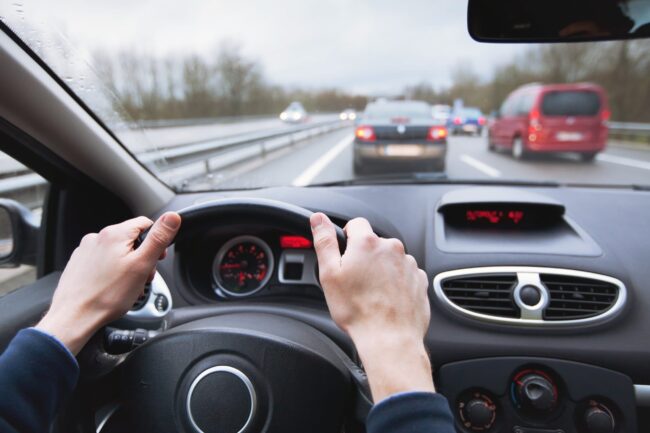
Introduction: When it comes to estimating driving times, we often focus on longer distances. But what about those short trips that are part of our everyday routines? Have you ever wondered how long does it takes to drive just 2 miles? Several Factors influence the time that we need to cover a distance. Hence, There will be different timeframes based on the circumstances.
Traffic Conditions
 Regardless of the distance, traffic congestion can significantly impact travel times. Even a short journey of 2 miles can be delayed by heavy traffic during peak hours, road construction, accidents, or special events. Staying informed about current traffic conditions through online maps or radio updates can help you plan your trip accordingly.
Regardless of the distance, traffic congestion can significantly impact travel times. Even a short journey of 2 miles can be delayed by heavy traffic during peak hours, road construction, accidents, or special events. Staying informed about current traffic conditions through online maps or radio updates can help you plan your trip accordingly.
Speed Limits and Road Conditions
The designated speed limits on the roads you traverse can influence your driving time. It is essential to adhere to posted speed limits for safety reasons. Although, it’s also important to remember that the state of the roads affects your ability to drive steadily. Factors such as potholes, weather conditions, or the presence of traffic signals and stop signs can impact your average driving speed.
Route Selection
Choosing the most efficient route for a 2-mile journey can make a noticeable difference in your travel time. Different routes may have varying numbers of intersections, traffic lights, or road layouts, which can impact the duration of your trip. Opting for routes with fewer stops or lower traffic density can help you reach your destination faster.
Driving Style
Your individual driving habits and style can influence the time it takes to cover a short distance. Factors such as acceleration, braking frequency, and adherence to traffic rules can affect your overall speed and efficiency. Maintaining a steady pace, avoiding unnecessary stops or maneuvers, and driving defensively can help save time on short journeys.
Strategies for Optimizing Short Trips
Planning ahead is crucial before embarking on a 2-mile journey. Check traffic reports, weather updates, and road conditions to identify potential obstacles or delays. This information can help you plan your trip accordingly, choosing the best route and departure time.
Utilizing navigation tools can be incredibly beneficial. Navigation apps like Google Maps, Waze, or Apple Maps provide real-time traffic updates, alternative route suggestions, and estimated travel times. Using such applications can help you navigate short distances more efficiently and avoid unexpected delays.
Timing your departure can play a significant role in short trip optimization. Consider peak traffic hours and plan to avoid them whenever possible. Leaving a few minutes earlier or later can make a notable difference in travel time, especially when it comes to short distances where traffic patterns can change rapidly.
Factors Affecting Driving Times for 2 Miles:
- Traffic conditions, such as congestion during peak hours, road construction, accidents, or special events, can significantly impact travel times.
- Speed limits and road conditions, including the presence of potholes, weather conditions, traffic signals, and stop signs, can affect your driving speed.
- Route selection plays a crucial role in determining the duration of your trip, with factors like the number of intersections, traffic lights, and road layout influencing travel times.
- Your driving style, including acceleration, braking frequency, and adherence to traffic rules, can impact your overall speed and efficiency.
- External factors like weather conditions, time of day, and day of the week can also influence driving times for short distances.
Understanding these factors allows you to make informed decisions and plan your 2-mile journeys more effectively. By considering traffic conditions, road conditions, route selection, driving style, and external factors, you can better estimate how long it will take to drive 2 miles and adjust your plans accordingly.
Mileage Device That Halts Distance Recording Process For Car Testing
A wonderful tool called a mileage blocker has the power to stop mileage from all control units from accumulating. It is capable of completing this work undetectably. Any altered data is completely undetected. This premium module was created for utilitarian uses, like testing your car without being concerned about extra kilometres piling up on the odometer. However, because to its faultless operation and dependability, it has also been exploited dishonestly. The makers of these instruments do not support their immoral use. The fact that the kilometers no longer build up on their own once the module has been removed is its biggest benefit.
Takeaway
While the focus of travel time estimation often revolves around longer distances, it is equally important to consider the factors that affect short journeys. Traffic conditions, speed limits, road conditions, route selection, and driving style all play a crucial role in determining how long it takes to drive just 2 miles. By considering these factors, planning ahead, utilizing navigation tools, and exploring alternative transportation options, you can optimize your travel time and navigate short distances more efficiently. Remember, even seemingly insignificant trips can benefit from a little extra thought and preparation.
Latest Posts
- 1
- 2
Is Buying a Car with Over 100k Miles a Good Idea?
April 10, 2024 - 3
Why Are High Mileage Cars So Expensive? – A Guide
April 5, 2024 - 4
Where Is The Mileage Located In A Car?
April 3, 2024 - 5
Whats High Mileage in Vehicles?
March 29, 2024 - 6
What’s The Gas Mileage On A Smart Car: A Comprehensive Guide
March 27, 2024 - 7
At What Mileage Should You Sell Your Car?
March 22, 2024 - 8
Should You Buy a Car with Over 100k Miles?
March 20, 2024 - 9
Should You Buy a Car with 100k Miles?
March 15, 2024 - 10
Understanding ODO Meaning in a Car
March 13, 2024








